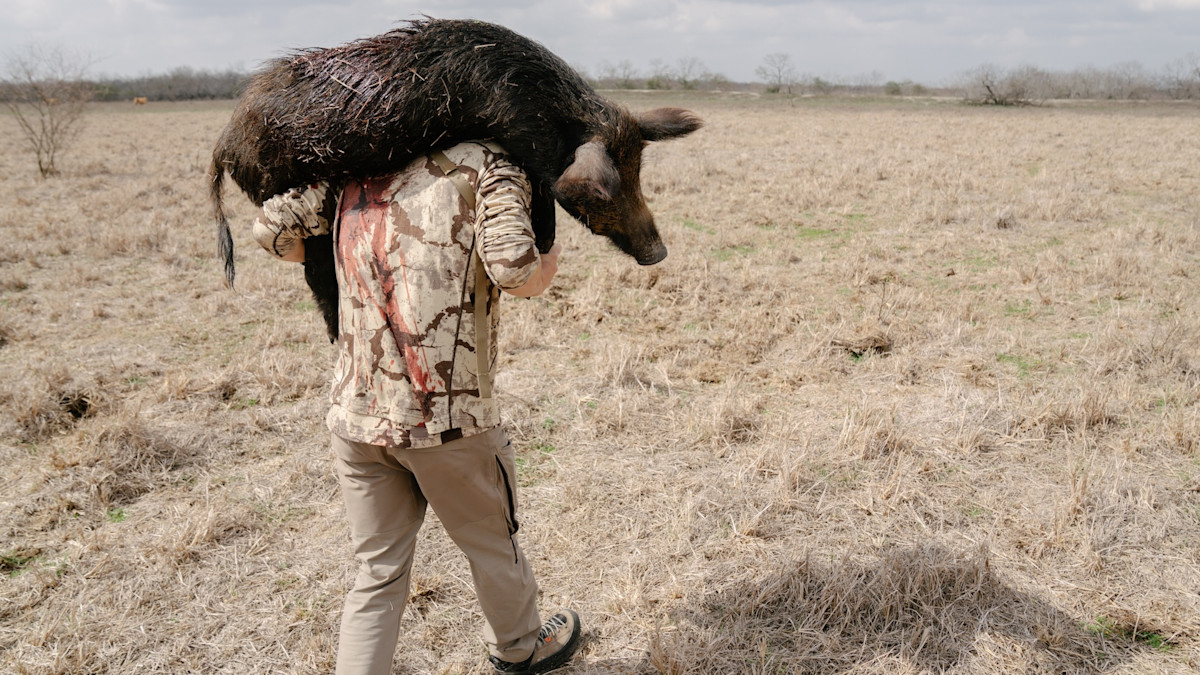
In Kentucky, the Department of Fish & Wildlife Resources (KDFWR) is finalizing a ban on hog hunting following a vote by the state’s commission in December. According to the agency, hunting is working against eradication and trapping efforts by educating wild pigs, making them nocturnal and dispersing them across the landscape.
Ben Robinson, the state wildlife director, told the commission in December that shooting hogs “goes against what we’re trying to do with our trapping efforts by educating these pigs, making them much more difficult to trap. We’re having a lot of success with our partners in trapping these animals and keeping them out of Kentucky. So by allowing landowners to just shoot freely—that goes against what we’re trying to do.”
Hogs are currently not considered a game species in Kentucky, and the state is seeking to keep it that way. Wild pigs were first reported in the state in 1988, but didn’t become commonly sighted until the ’90s. Once established, a population of hogs is incredibly difficult to remove. Sows are capable of having two litters a year, with up to ten piglets per litter. As such, it takes culling 70% of the population annually to keep their numbers in check—according to KDFWR. Currently, hunters are only removing an estimated 30% annually—not nearly enough to eradicate the pigs.
“Hunting has been proven time and again to be ineffective in eliminating wild pig problems,” Chad Soard, a wildlife biologist in the state wrote in a recent report. “Although trapping can become expensive, the cost is far less than the economic impact of not controlling wild pig populations.”
According to the state, restricting hunting will ultimately increase the effectiveness of trapping, resulting in a greater harvest than could be achieved with a mix of hunting and trapping. For years, the agency has discouraged people from shooting pigs, directing landowners to call state biologists to coordinate trapping efforts instead. The new regulations, however, codify the directives into a full-on ban.
While the state is clear with its reasoning, MeatEater’s Ryan Callaghan suspects there may be another underlying motivation for the ban: “I think that a lot of the commission’s reasoning behind banning pig hunting is to avoid the growth of pig-hunting culture and industry. Some landowners want to eradicate pigs, but others like having them around,” he said.
“In Texas, there’s a big outfitting industry around pig hunting, not to mention all the thermal and night-vision products that hit the market because of it. This makes things more difficult for biologists who understand the environmental harm posed by the swine, and for landowners who’d rather not have their ground torn up. I can see why Kentucky wants to avoid that controversy, which I think is the real reason for the ban.”
Nebraska, Kansas, Nevada, Utah, and Missouri have already banned hog hunting as well—at least in certain areas, and on certain lands. Other states, though—like Colorado, have taken the opposite approach, encouraging hunters to shoot every hog they can. “I encouraged every landowner… every hunter that I talked to, that if they had the opportunity to shoot these pigs, they should probably try to get them off of the landscape,” a wildlife manager with Colorado Parks and Wildlife told NPR in 2021. Colorado’s hardline tactics worked, though, and the state managed to eradicate all feral hogs in 2022.
But what works in one state might not work elsewhere. Biologists have noted that hunting might only be an effective control tactic in areas with rampant hog populations. Wildlife managers in Oklahoma at one point were considering a hog ban, but with an estimated 750,000 hogs, decided that hunting was still lethal enough to keep the population in check. Kentucky, meanwhile, only has around 1,000 to 10,000 hogs, depending on different estimates and sources. With that diffuse of a population, the effectiveness of hunting decreases—according to state biologists.
As Kentucky cracks down on its hog populations, it will be interesting to see how the new hunting ban pans out. It’s one strategy in the seemingly never-ending battle with feral hogs throughout the country.





